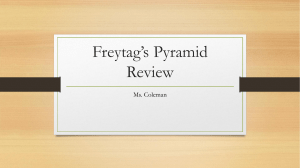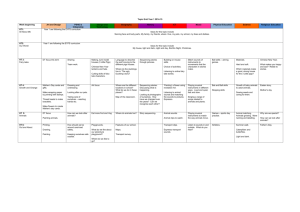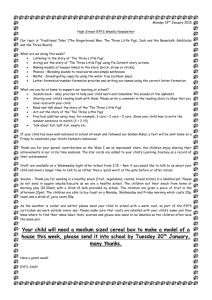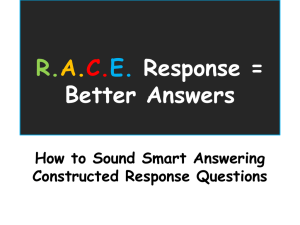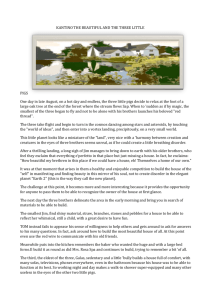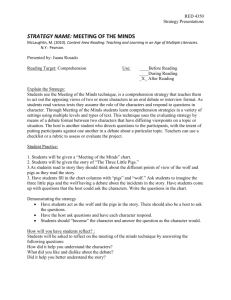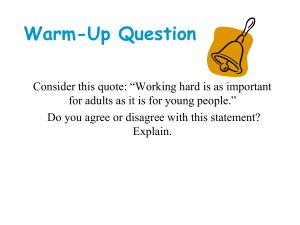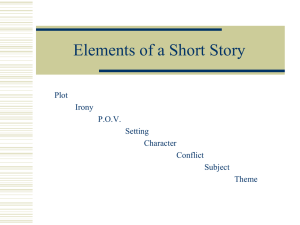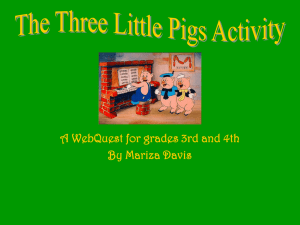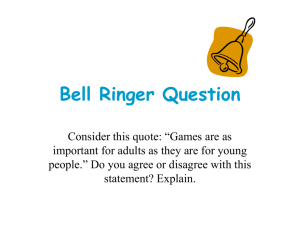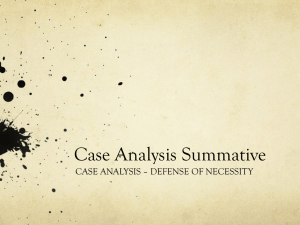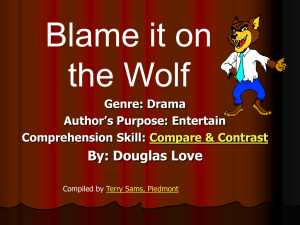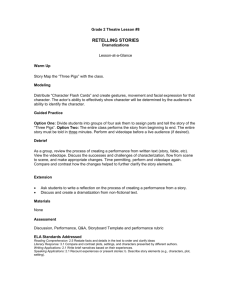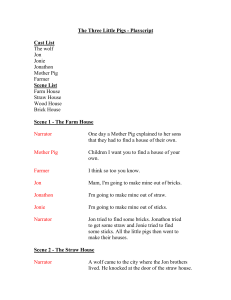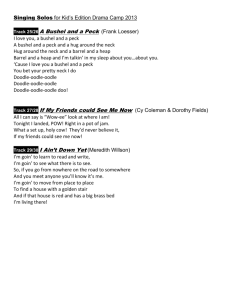ELA K The True Story of the Three Little Pigs
advertisement
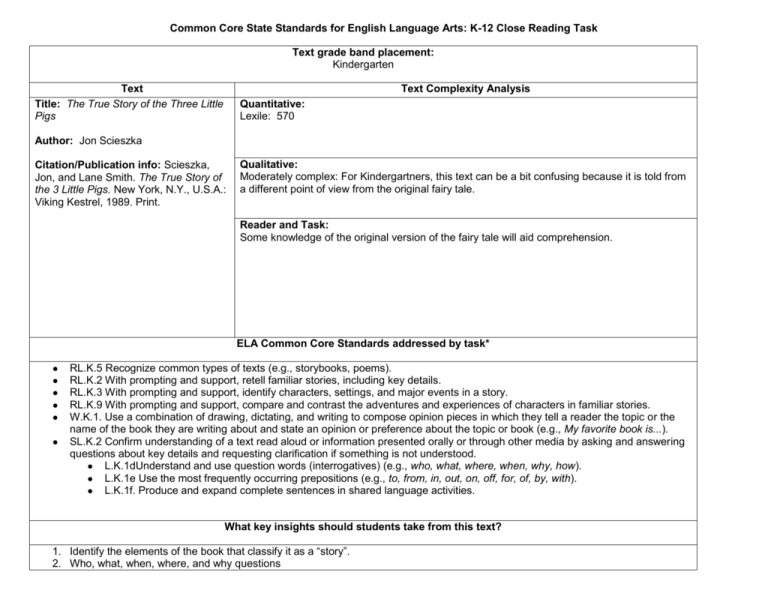
Common Core State Standards for English Language Arts: K-12 Close Reading Task Text grade band placement: Kindergarten Text Title: The True Story of the Three Little Pigs Text Complexity Analysis Quantitative: Lexile: 570 Author: Jon Scieszka Citation/Publication info: Scieszka, Jon, and Lane Smith. The True Story of the 3 Little Pigs. New York, N.Y., U.S.A.: Viking Kestrel, 1989. Print. Qualitative: Moderately complex: For Kindergartners, this text can be a bit confusing because it is told from a different point of view from the original fairy tale. Reader and Task: Some knowledge of the original version of the fairy tale will aid comprehension. ELA Common Core Standards addressed by task* ● ● ● ● ● ● RL.K.5 Recognize common types of texts (e.g., storybooks, poems). RL.K.2 With prompting and support, retell familiar stories, including key details. RL.K.3 With prompting and support, identify characters, settings, and major events in a story. RL.K.9 With prompting and support, compare and contrast the adventures and experiences of characters in familiar stories. W.K.1. Use a combination of drawing, dictating, and writing to compose opinion pieces in which they tell a reader the topic or the name of the book they are writing about and state an opinion or preference about the topic or book (e.g., My favorite book is...). SL.K.2 Confirm understanding of a text read aloud or information presented orally or through other media by asking and answering questions about key details and requesting clarification if something is not understood. ● L.K.1dUnderstand and use question words (interrogatives) (e.g., who, what, where, when, why, how). ● L.K.1e Use the most frequently occurring prepositions (e.g., to, from, in, out, on, off, for, of, by, with). ● L.K.1f. Produce and expand complete sentences in shared language activities. What key insights should students take from this text? 1. Identify the elements of the book that classify it as a “story”. 2. Who, what, when, where, and why questions 3. 4. 5. 6. Prepositions used to strengthen sentence structure and language skills. Events in a story must be retold in order for the story to make sense (sequencing). Form an opinion about the story in contrast to the original fairy tale and support their opinion with a valid reason. Understand that there may be several versions of a story and that there can be no “real” story because the events and characters are fictitious. 7. Illustrations in a book are intended to relay the same storyline as the text and that the print of the page matches the illustration. Text-Dependent Questions ● ● ● ● ● ● What is the reason the wolf goes to the pigs’ houses? How is this different from the original story of The Three Little Pigs? What did the wolf do that caused the straw and stick houses to fall down? How did the third little pig act towards the wolf? Is this the same as the original story? How did the wolf get the name of “Big Bad Wolf” in this story? Do you believe the story that the wolf told? Why or why not? Use text evidence. Explain how you know that this is a storybook not “informational text”. Writing Mode Opinion Writing Prompt Which version of The Three Little Pigs do you like best? Give details from the text to support your opinion. Note: This writing prompt would be completed after reading another version of “The Three Little Pigs” (Possible Source: The Three Little Pigs Big Book, Paul Galdone Classics) Scaffolding and support for special education students, English language learners, and struggling readers: ● Use a graphic organizer to record information as you compare and contrast the two versions. ● Re-read text in either whole group or small group setting for the purpose of increased comprehension and vocabulary development. May also be placed in a listening center. ● Use sequencing cards to order story events and provide opportunities to retell story to peers. Supporting the Reading: Foundational Skills Standards: RF.K.1. Demonstrate understanding of the organization and basic features of print. Students would gain an understanding of the basic print features through the read-aloud of this story. Using a large document reader, display the book and track the text during read-aloud and be exposed to the left-to-right, top-to-bottom, and page-by-page features of a book. RF.K.2. Demonstrate understanding of spoken words, syllables, and sounds (phonemes). To help students be successful on their writing prompt, create a story “web” of the major events. Students will match the sounds to letters as they are written phonetically. RF.K.3. Know and apply grade-level phonics and word analysis skills in decoding words. Students review the necessary sight words to complete the writing task (I, like, the, my, etc.). Students would also need to be able to produce many of the common consonant and vowel sounds to write their sentence. Review sounds with students prior to the writing task and assist students during the process.
